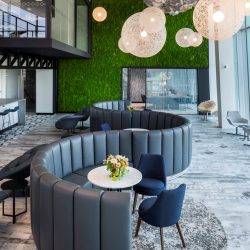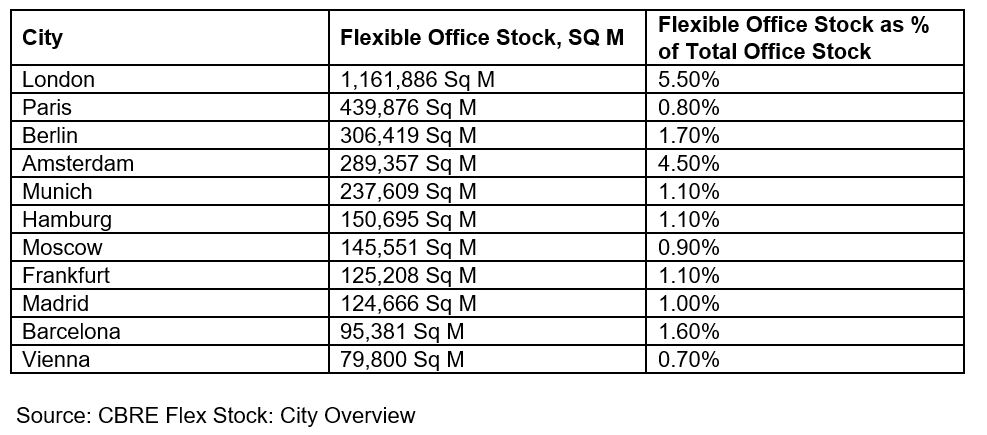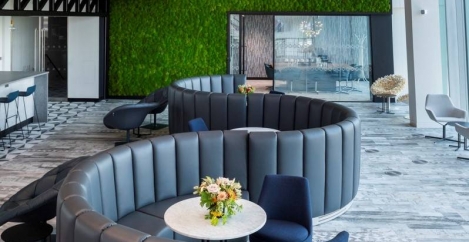August 7, 2019
London is top flexible offices market in Europe
 Research conducted by CBRE claims that London’s stock of flexible offices amounted to over 1.1 million square metres, representing over 5 percent of the city’s total office stock. This places London firmly top of the table of flexible office markets, when compared to major cities across Europe.
Research conducted by CBRE claims that London’s stock of flexible offices amounted to over 1.1 million square metres, representing over 5 percent of the city’s total office stock. This places London firmly top of the table of flexible office markets, when compared to major cities across Europe.
The next closest city in Europe in terms of amount of space is Paris, offering 439,000 square metres, equivalent to around 0.8 percent of total Paris office stock. In terms of the overall market contribution of flexible space, Amsterdam came closest to London with around 290,000 square metres, equivalent to 4.5 percent of the Amsterdam office stock. This is one of several examples of European cities that have seen rapid recent growth in the stock of flexible space.
The research looked at the ten largest cities across Europe in terms of total amount of space flexible space on offer and its percentage share of the commercial office sector as a whole. Flexible offices are increasingly used by corporates as a means of attracting and retaining talent in a tight labour market. Companies are also increasingly using flexible space to test alternative occupancy models, which is fuelling demand.
 Richard Holberton, Head of CBRE Occupier Research EMEA, said: “Corporate appetite for flexible space continues to strengthen and, as a result, the stock of flexible offices is expanding across a number of major European cities. Nonetheless, as these figures show, London commands a position of dominance and relative maturity, and is the major player in Europe when it comes to flexible working.”
Richard Holberton, Head of CBRE Occupier Research EMEA, said: “Corporate appetite for flexible space continues to strengthen and, as a result, the stock of flexible offices is expanding across a number of major European cities. Nonetheless, as these figures show, London commands a position of dominance and relative maturity, and is the major player in Europe when it comes to flexible working.”
Stewart Smith, Managing Director, CBRE Advisory & Transaction Services Occupier commented: “Whilst the demand for space from operators seems to continue unabated, what remains clear is how the use of Flex or Coworking space is rapidly rising up the corporate agenda. This is frequently driven by the desire of business to disrupt their own enterprise as well as being a strategy to aid in attracting the increasingly important digital talent pool. This demand will continue to drive transactions of increasing scale.”
Image: LEO Nova North designed by Area















